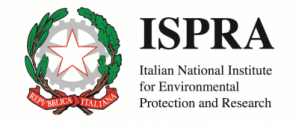
Blog
-
Geiger Readings for Dec 07, 2016
Ambient office = 83 nanosieverts per hourAmbient outside = 67 nanosieverts per hourSoil exposed to rain water = 66 nanosieverts per hourIceberg lettuce from Central Market = 58 nanosieverts per hourTap water = 85 nanosieverts per hourFilter water = 80 nanosieverts per hour -
Nuclear Reactors 434 – MP In Australia Suggests Nuclear Power Plant As Possible Solution To Alcoa Aluminum Smelter Problems
Portland in the Australian state of Victoria is the oldest European settlement in the state. It was founded in the early Nineteenth Century but only designated as an Australian “city” in 1895. It currently has about ten thousand residents. The primary industrial activity in Portland is an Alcoa aluminum smelter. It processes about three hundred and fifty thousand tons of aluminum each year. It is the third largest aluminum smelter in Australia and exports about thirty percent of Australia’s aluminum.
On December 2nd of this year, there was a major power failure in Portland due to a problem in the Victoria system of power transmission lines. The Alcoa plant has two production lines which handle molten aluminum in pots. One of the lines stopped because of the power failure which lasted for five hours. During this time, the molten aluminum solidified in the pots on the halted line and caused severe damage. The other line was running at limited capacity because of technical problems. After the power failure, the second production line was stopped. Alcoa is currently assessing the damage and working on a plan to salvage as much of the facility as possible.
About two thousand jobs in Portland rely on the smelter. Alcoa is Victoria’s biggest exporter. There is a great deal of concern about the continued viability of the smelter. Recently, Alcoa had to negotiate new higher-priced contracts for the supply of electricity to the smelter which will cost Alcoa an extra fifty million dollars this year. Alcoa will also lose forty million dollars because of a drop in aluminum prices. In addition, Alcoa is losing an important government subsidy. Currently, the Portland smelter is operating at a loss. Now with the severe accident that just occured, the future of the smelter is in serious doubt and there are some reports that it may have to close permanently within the next ten years.
Australia has a parliamentary form of government which means that there are many political parties of various sizes. The smallest parties are referred to as micro-parties. A member of Parliament (MP) from the Vote 1 Local Jobs has now been suggested that a small nuclear power plant should be built in Portland to supply reliable electricity to the smelter to help ensure its continued operation and contribution to the economy of Victoria.
Currently, Australian national law and Victorian state law prohibit the use of nuclear power for the generation of electricity. There are political forces on both sides of the issue with a major party pushing for relaxation of the nuclear prohibition and a very strong anti-nuclear movement push back.
It may be possible to improve the chances for continued operation of the Alcoa smelter in Portland if a nuclear power plant could be built to supply it with electricity. However, such a plant would require major political changes to the current Australian stance on nuclear power. In addition, such a project would require significant government support to cover the costs of building the nuclear plant. This is unlikely in view of the fact that Alcoa recently tried and failed to receive government subsidies for changes in the regional electrical grid to make the supply of electricity to the smelter more reliable. The outlook for the Portland smelter is grim.
-
Geiger Readings for Dec 06, 2016
Ambient office = 71 nanosieverts per hourAmbient outside = 112 nanosieverts per hourSoil exposed to rain water = 113 nanosieverts per hourCarrot from Central Market = 73 nanosieverts per hourTap water = 79 nanosieverts per hourFilter water = 66 nanosieverts per hour -
Nuclear Reactors 433 – IAEA Reviews Italy’s Nuclear Regulatory Practices
An 18-member team from the International Atomic Energy Agency carried out an Integrated Regulatory Review Service (IRRS) mission to evaluate the regulatory framework for nuclear and radiation safety in Italy in late November of this year. Fourteen experts from Sweden, France, Germany, Switzerland, Finland, Slovenia, Cuba, Luxembourg, Spain and Hungary, plus four International Atomic Energy Agency staff members, spent 12 days in Italy. The mission was hosted by the Italian government and the Italian Institute for Environmental Protection and Research’s (ISPRA’s) nuclear, technological and industrial risk department.
The IRRS carries out these review missions in order to ” strengthen the effectiveness of the national radiation safety regulatory infrastructure, while recognizing the responsibility of each member state to ensure nuclear and radiation safety.” The IRRS review compares the nuclear regulatory frameworks in a member country with IAEA standards and best practices in the international nuclear industry. The review results in a report that identifies good nuclear regulatory practices in the nation hosting the review and also points out area for improvement.
The review verified that Italy has a regulatory framework for nuclear safety. Italy has “state of the art” practices with respect to decommissioning nuclear reactors and handling nuclear waste. There is a comprehensive database and analytical software for evaluating nuclear transport issues. And, the IRRS review concluded that Italy has excellent training for radiation protection experts.
The IRRS review identified areas where Italy could improve its framework for regulating nuclear safety. Italy should continue working on national policies for safety, decommissioning and radioactive waste management. It also recommended that Italy complete work on legal frameworks for “the approval of technical services, the establishment of national databases related to safety and improvements in aspects of the authorization process.”
The IRRS review suggested that an integrated management and communication system should be developed for the new NSRP regulatory board and said that Italy should improve the regulation of “review and assessment, authorization, inspection, emergency preparedness and response, and occupational and public exposure control.”
The ISPRA Director said, “The effort made by ISPRA staff to conduct the self-assessment and to host the IRRS mission as well as the commendable work done by the IRRS team will provide very useful basis for further improving our national regulatory system for nuclear safety and radiation protection.”
Italy has operated four nuclear power reactors in the past but decided to abandon the use of nuclear power following the Chernobyl nuclear disaster in 1986. The last two power reactors were shut down in 1990. The Management Company for Nuclear Plants was created to oversee the decommissioning of the old nuclear power plants and to locate a site for the permanent disposal of nuclear waste. Italy still operates five research reactors and utilizes nuclear radiations sources for medical, industrial and research applications.
Legislation was passed in 2014 in Italy to create the Inspectorate for Nuclear Safety and Radiation Protection (NSRP) which will take over the duties for nuclear regulation from ISPRA which has had that responsibility for many years.
-
Geiger Readings for Dec 05, 2016
Ambient office = 73 nanosieverts per hourAmbient outside = 81 nanosieverts per hourSoil exposed to rain water = 87 nanosieverts per hourRomaine lettuce from Central Market = 70 nanosieverts per hourTap water = 121 nanosieverts per hourFilter water = 112 nanosieverts per hour -
Geiger Readings for Dec 04, 2016
Ambient office = 99 nanosieverts per hourAmbient outside = 104 nanosieverts per hourSoil exposed to rain water = 88 nanosieverts per hourOrange bell pepper from Central Market = 95 nanosieverts per hourTap water = 106 nanosieverts per hourFilter water = 97 nanosieverts per hour -
Geiger Readings for Dec 03, 2016
Ambient office = 153 nanosieverts per hourAmbient outside = 95 nanosieverts per hourSoil exposed to rain water = 111 nanosieverts per hourRedleaf lettuce from Central Market = 84 nanosieverts per hourTap water = 160 nanosieverts per hourFilter water = 138 nanosieverts per hourAlaskan Cod – Caught in USA = 96 nanosieverts per hour






